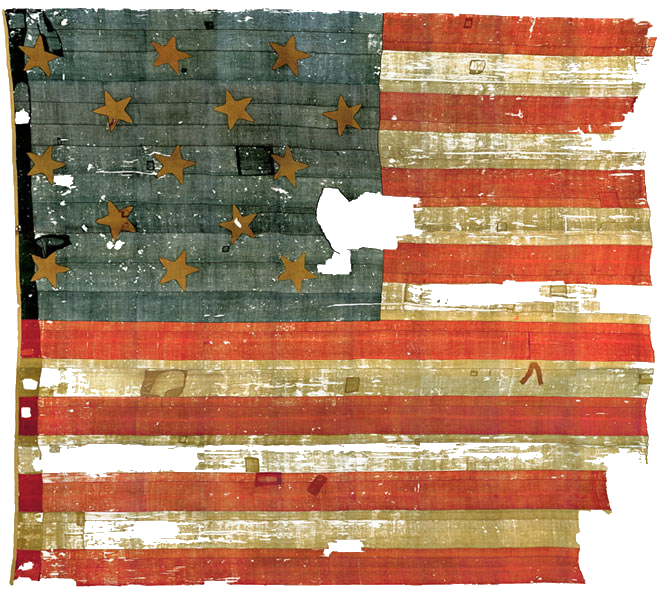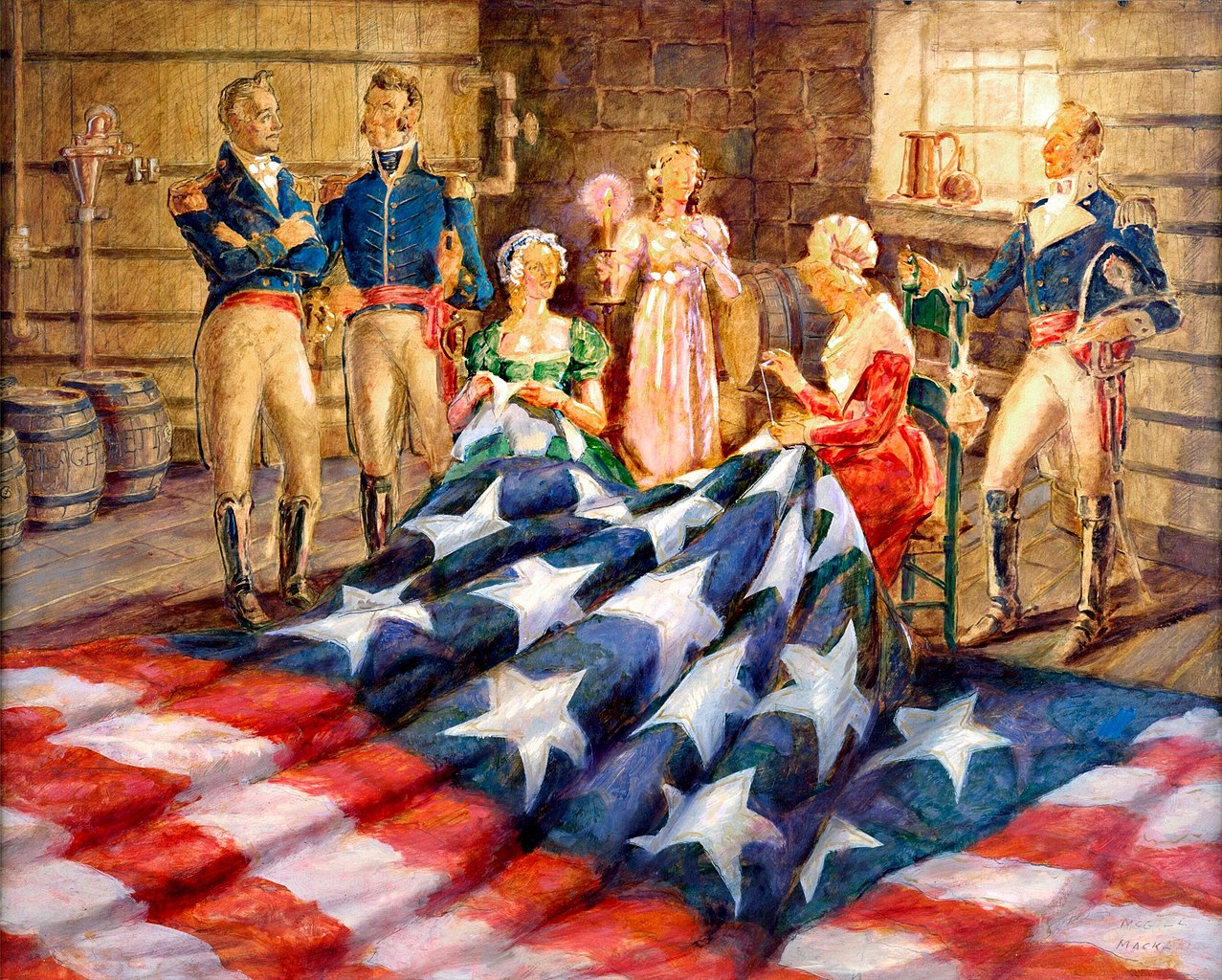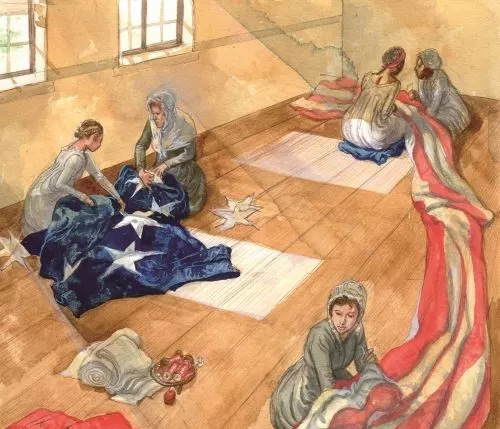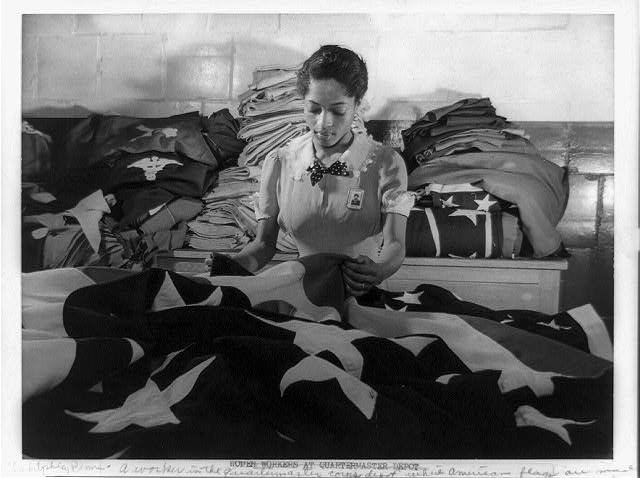Grace Wisher, a free-born Black girl from Baltimore, Maryland, helped stitch the Star-Spangled Banner during the six-year apprenticeship she began with white flag-maker Mary Pickersgill around 1810.

In the conventional telling of the story, Pickersgill, her daughter Caroline, and one of her nieces all receive recognition for sewing the most popular flag in U.S. history—the flag that would later inspire Frances Scott Key, a slaveholder and colonizationist, to write the national anthem. But that banner’s famous backstory has unfortunately erased Grace’s contribution.
To tell the full history of the United States, we must reintroduce Grace Wisher into historical conversations of the Star-Spangled Banner’s creation. Recalling her role in forging the very image of the “Land of Liberty” can help us to better grasp how Black women and girls have been at the heart of the nation’s story since its creation.
Three years into Grace’s apprenticeship, Pickersgill was commissioned to create the Star-Spangled Banner in celebration of the United States’ victory against Great Britain in the War of 1812. It was not the original flag of the United States, but it was the one that would instill love and loyalty among countless American citizens for their homeland. Before the creation of the Star-Spangled Banner, many Americans did not hang the flag to showcase their national pride.

In 1820, there were approximately 10,326 free Black Baltimoreans and as the years progressed, Baltimore would boast of the largest free Black population in the country. They dwelled and worked around the harbor and Fell’s Point, which were in close proximity to shipyards, docks, and warehouses.
A significant number of free Black Baltimoreans also lived in small houses on narrow alleys, including those like Happy Alley, Dutch Alley, and Apple alley. Considering that Grace was free until her mother Jenny Wisher apprenticed her, it is fair to assume she would have lived in such areas along with her family.
According to Sally Johnson and Pat Pilling in their book Mary Young Pickersgill: Flag Maker of the Star-Spangled Banner, Grace’s mother received $20 at the signing of the contract. She was guaranteed another $12 at the end of her daughter’s six years of service.
There are speculations as to why Grace was sold into an apprenticeship. During this time, children of impoverished households worked to contribute to the family income and many white and Black working-class populations sold their children as apprentices to offset some of the expenses of rearing multiple children.
Many Black women were heads of households either because they were widowed, their husbands were enslaved, or their husbands could not find work. Working as laundresses or domestic servants did not contribute sufficiently to the family income, so Black mothers had to make difficult decisions to survive.

Only ten at the time of the apprenticeship, Grace was not yet old enough to work for wages. The most she could have contributed to the household was to assist her mother with domestic responsibilities. It is likely that Grace’s mother decided to apprentice her to receive instant economic assistance and to absolve the financial burden of providing for her.
Pickersgill reassured Grace’s mother that she would teach her the “art and mystery of housework and plain sewing,” which explains why Grace assisted in creating the Star-Spangled Banner. But why has her contribution been absent in history books?
It is not unusual for the contributions of Black populations to be excluded. But the stories of Black women and girls, especially, are overlooked, given that they have occupied positions in society that are, as historian Treva Lindsey has written, on the “margins of the margins.” In other words, Black women and girls have historically numbered among the most marginalized individuals within an already marginalized population.
Grace is absent from this story because of her inferior status in American society— she was poor, Black, and a girl. She had three strikes against her that played a role in silencing her contribution to such an important task.

Despite the absence of Black women and girls in the historical record, they held an influential role in the establishment of the United States. Their bodies were relied upon for the continuation of the institution of slavery. They were forced into reproductive, domestic, and manual labor to advance the economic and capitalist interests of white slave owners.
In the instance of Grace, a young Black girl’s labor was vital in creating the image of the United States—a task that took six long weeks to complete. There was also an unnamed enslaved Black girl who was said to have helped stitch the banner.
It is critical that we begin to recognize and discuss the work of Black women and girls. Without illuminating the impacts of their labor, the history of the United States remains incomplete. Historians Daina Berry and Kali Gross assert that, “Black girls and women like Grace have literally stitched themselves into our nation’s history,” but mainstream historical accounts continuously overlook their contributions.
![]()
Learn more:
Daina R. Berry and Kali N. Gross, A Black Women’s History of the United States (Boston: Beacon Press, 2020).
Jacqueline Jones, Labor of Love, Labor of Sorrow: Black Women, Work and Family, From Slavery to the Present (New York: Basic Books, 1986).
Treva B. Lindsey, America Goddam: Violence, Black Women and the Struggle for Justice (Oakland: University of California Press, 2022).
Seth Rockman, “Women's Labor, Gender Ideology, and Working-Class Households in Early Republic Baltimore.” Pennsylvania history 66 (1999): 174-200.
Rikki Byrd, “The American Flag Was Sewn in Part by a Teenage Black Girl, Teen Vogue,” July 3, 2020, accessed June 6, 2022, https://www.teenvogue.com/story/the-american-flag-was-sewn-in-part-by-a-teenage-black-girl.
“Baltimore’s Civil Rights Heritage,” accessed June 4, 2022, https://baltimoreheritage.github.io/civil-rights-heritage/1831-1884/#black-life-in-baltimore-before-the-civil-war.
“A Lasting Legacy: Baltimore’s African American History, accessed June 4, 2022, https://www.explorebaltimore.org/city-history/a-brief-overview-of-baltimores-african-american-history/
“National Symbols, Stories, and Icons,” accessed June 4, 2022, https://www.nps.gov/stsp/learn/historyculture/national-symbols-stories-icons.htm.
Sally Johnson and Pat Pilling, Mary Young Pickersgill: Flag Maker of the Star-Spangled Banner. (Bloomington: AuthorHouse, 2014).
